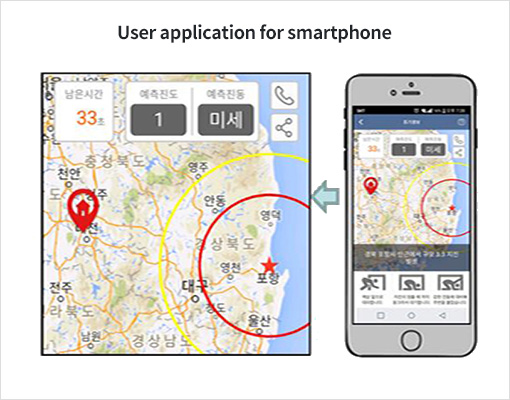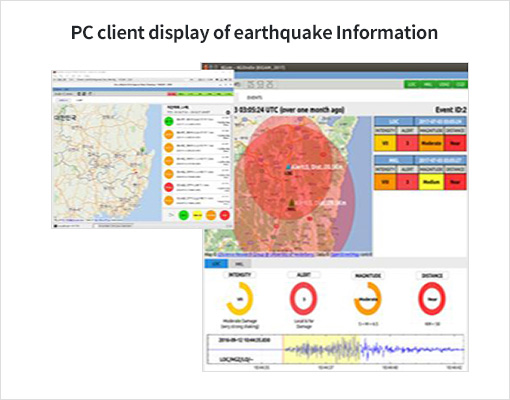
KEEWS (The Korea Earthquake Early Warning System) has officially operated for more than three years, successfully and automatically issuing four earthquakes with magnitudes exceeding 5.0. People near the epicenter, however, require quicker and reliable alerts. Hence, on-site accelerometers should be used with combined results from on-site and network-based warnings. Such a hybrid earthquake early warning system would be a reasonable approach to improve the performance of KEEWS. We developed smart phone applications showing the lead-time of a S-wave to the user's location using the phone's location and earthquake information issued by KEEWS (Fig. 1a). Also developed was a PC client display program of earthquake information from the hybrid EEW system for user alerts (Fig. 1b). Public and key-industry operators have difficulty understanding text-based earthquake information; thus, the smart phone application and PC client user display will help these users by directly showing the lead-time and predicted damage at the user site or facility location.
-

Fig. 1. A sample event display on the smart phone application. The red star shows the epicenter, and the yellow and red circle lines are the P- and S-wave propagation lines, respectively. The lead-time of the S-wave is in the left upper corner and the user's location is denoted by the red house symbol
-

Fig. 2. PC client display module for facility operators. The left upper display event lists and locations and the screen on the right shows an earthquake event shaded in small and large red circles using on-site accelerometer data.